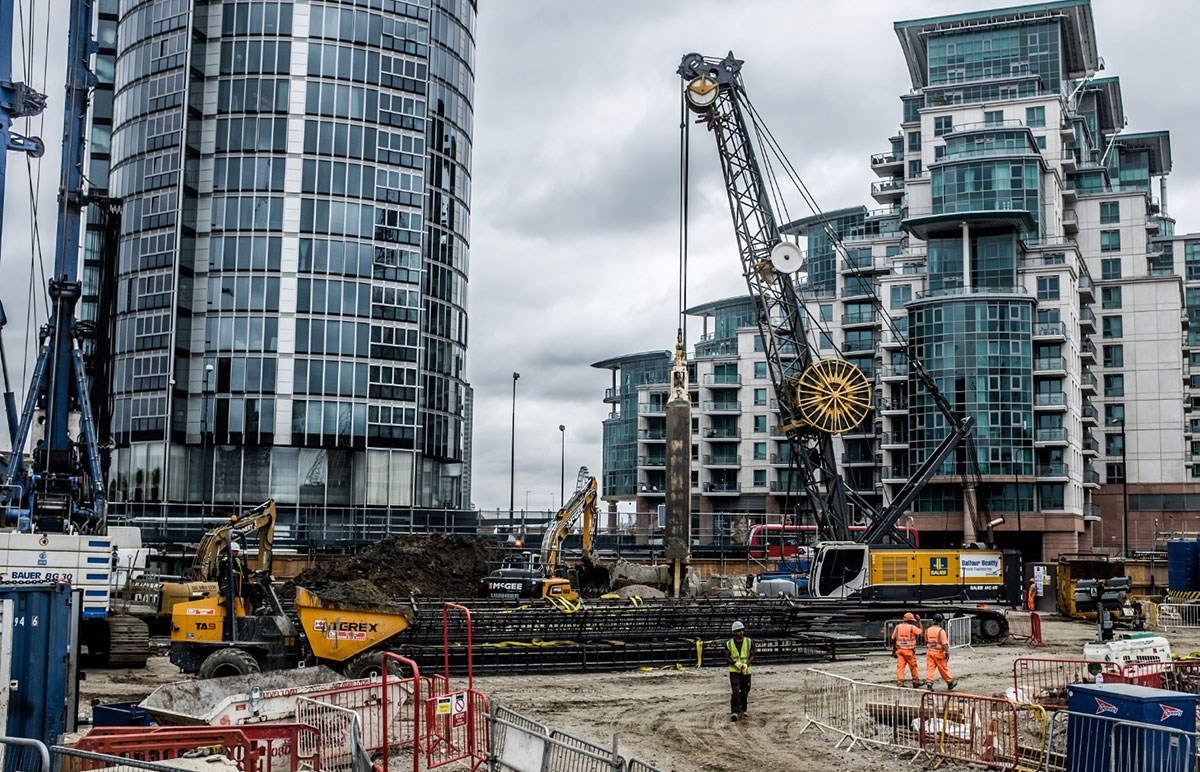See This Report about Geotheta
See This Report about Geotheta
Blog Article
The Ultimate Guide To Geotheta
Table of ContentsSome Known Questions About Geotheta.The smart Trick of Geotheta That Nobody is DiscussingGeotheta Can Be Fun For EveryoneThe Single Strategy To Use For GeothetaExamine This Report about Geotheta

They carry out site investigations, gather samples, perform lab examinations, and examine data to evaluate the viability of the ground for construction jobs - Tailings Engineer. Based upon their findings, geotechnical designers offer referrals for foundation design, slope stability, maintaining frameworks, and mitigation of geotechnical hazards. They team up with various other experts, such as architects, architectural designers, and construction teams, to ensure that geotechnical considerations are integrated into the total project style and execution
By analyzing the behavior and buildings of dirt and rock, they can determine possible geotechnical hazards such as landslides, dirt settlement, or incline instability. Their experience helps prevent failures or accidents that could endanger lives and building. Below are some detailed duties and obligations of a geotechnical engineer: Site Investigation: Geotechnical engineers conduct website examinations to collect information on subsurface problems.
They analyze the data to recognize the homes and actions of the soil and rock, including their toughness, leaks in the structure, compaction qualities, and groundwater conditions. Geotechnical Analysis and Style: Geotechnical engineers evaluate the data collected throughout site examinations to assess the stability and viability of the website for building and construction tasks. They perform geotechnical computations and modeling to review factors such as bearing capability, negotiation, incline stability, lateral earth pressures, and groundwater circulation.
The Only Guide to Geotheta
Foundation Layout: Geotechnical engineers play an essential duty in developing structures that can securely sustain the desired framework. They evaluate the soil problems and lots needs to identify the proper foundation type, such as shallow structures (e.g., grounds), deep foundations (e.g (https://trello.com/u/geotheta)., piles), or specialized methods like soil enhancement. They take into consideration factors such as negotiation limitations, birthing ability, and soil-structure communication to develop optimal foundation styles
They review building and construction strategies, display website activities, and perform area evaluations to verify that the layout suggestions are adhered to. If unforeseen geotechnical problems occur, they analyze the situation and provide suggestions for removal or modifications to the design. Risk Analysis and Mitigation: Geotechnical designers analyze geotechnical threats and risks connected with the project site, such as landslides, liquefaction, or dirt disintegration.

Collaboration and Communication: Geotechnical designers work carefully with various other professionals associated with a project, such as designers, structural designers, and construction teams. Effective interaction and partnership are necessary to useful site integrate geotechnical considerations right into the total job style and building and construction procedure. Geotechnical designers give technical competence, solution inquiries, and guarantee that geotechnical demands are fulfilled.
The 5-Second Trick For Geotheta
Here are some sorts of geotechnical engineers: Foundation Designer: Foundation engineers concentrate on making and evaluating structures for frameworks. They assess the dirt conditions, lots demands, and website features to identify one of the most proper foundation kind and layout, such as shallow structures, deep structures, or specialized techniques like heap structures.
They review the variables affecting slope stability, such as soil homes, groundwater conditions, and slope geometry, and develop methods to avoid slope failures and reduce threats. Quake Designer: Earthquake engineers focus on analyzing and designing frameworks to stand up to seismic forces. They evaluate the seismic hazard of a website, examine soil liquefaction capacity, and create seismic design standards to make certain the safety and security and resilience of frameworks throughout earthquakes.
They carry out area testing, gather samples, and assess the gathered information to define the soil buildings, geologic formations, and groundwater conditions at a website. Geotechnical Instrumentation Engineer: Geotechnical instrumentation engineers concentrate on surveillance and determining the habits of soil, rock, and frameworks. They install and keep instrumentation systems that monitor variables such as dirt settlement, groundwater levels, incline activities, and architectural variations to analyze performance and provide very early cautions of prospective problems.
The 9-Minute Rule for Geotheta
They perform examinations such as triaxial tests, combination examinations, direct shear examinations, and leaks in the structure tests to collect data for geotechnical analysis and layout. Geosynthetics Engineer: Geosynthetics designers focus on the design and application of geosynthetic products, such as geotextiles, geogrids, and geomembranes. They utilize these products to boost dirt security, strengthen slopes, offer drain solutions, and control disintegration.
They have a tendency to be investigatory people, which suggests they're intellectual, reflective, and analytical. They are interested, methodical, reasonable, analytical, and sensible. A few of them are additionally social, implying they're kind, generous, participating, person, caring, valuable, compassionate, tactful, and friendly. Does this seem like you? Take our complimentary profession test to learn if geotechnical engineer is among your leading job suits.
In the office environment, geotechnical designers use specialized software application devices to execute estimations, produce styles, and analyze information. They prepare records, testimonial job requirements, interact with customers and group members, and coordinate project tasks. The office setting offers a conducive setting for research, evaluation, and cooperation with various other professionals included in the project.
Geotheta Things To Know Before You Buy
They often visit job websites to perform website investigations, analyze geotechnical problems, and collect information for evaluation. These gos to involve taking a trip to various areas, in some cases in remote or tough surfaces. Geotechnical designers might do soil sampling, conduct tests, and monitor construction activities to make sure that the geotechnical aspects of the project are being applied properly.
Geotechnical designers likewise function in specialized geotechnical labs. In these centers, they conduct experiments, perform examinations on soil and rock examples, and evaluate the design homes of the products. Geotechnical lab engineers work extensively in these atmospheres, taking care of testing equipment, running tools, and videotaping data. They collaborate with various other research laboratory staff to ensure precise and dependable screening results.
Report this page